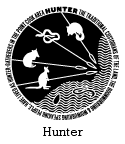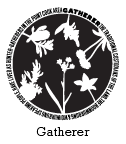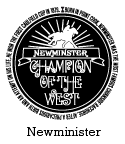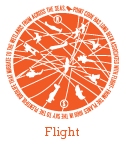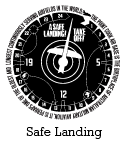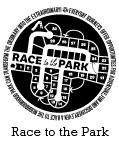Fairy tern | Sterna nereis
The Fairy Tern, also known as Nereis Tern, White-faced Tern, Little Sea-swallow, Sea-swallow or Ternlet, is a small water bird.
It is white, except for the black crown from the bill to the nape and the orange-yellow bill.
One of the smallest terns in Australia, the Fairy Tern breeds in colonies and both sexes share incubation of the eggs and care for the young. Nests can be found in sandy patches among rocks, among clumps of pigface, or along banks of seaweed. Fairy Terns have been recorded breeding in Point Cook and are a threatened shorebird in the Point Cooke Marine Sanctuary and surrounds.
Australian Pelican | Pelecanus conspicillatus
The Australian Pelican is white, has an elongated bill with a large throat pouch and large wings. Mainly found throughout Australia, Papua New Guinea and western Indonesia, it is widespread on freshwater, estuarine and marine wetlands and waterways.
Incapable of sustained flapping flight, it can remain in the air for 24 hours, covering hundreds of kilometres.
The pelican’s bill and pouch are integral to feeding and when the bill is fully extended it can hold up to 13 litres of water. The pelican plunges its bill into the water, uses its pouch as a net and manoeuvres the prey into swallowing position.
A flock of pelicans work together and bring fish into a concentrated area. Pelicans’ nests are prepared by females but the eggs are incubated on their feet, a role shared by both sexes. When they leave their nests, the chicks form ‘creches’ of up to 100 birds, in which the chicks learn to fly.
Arctic Skua | Stercorarius parasiticus
The Arctic Skua is an aggressive seabird and is often referred to as a pirate. This is because it steals most of its food from other seabirds. It is a small bird with slender wings. An adult has long pointed central tail feathers that stand out beyond its tail. During summer it migrates to Australia’s coastal areas. It feeds on eggs, seabirds, small mammals and fish.
Mustang | CAC CA-18 Mustang Mk 23 A68-170
The RAAF Mustang is an American fighter aircraft used in Japan after the Second World War. It remained in service until 1959 with the Citizen’s Air Force Squadrons. In 1970 it joined the RAAF Museum. After a lengthy restoration the Mustang returned to the skies in 1999, participating in the Avalon air show.
Winjeel | CAC Winjeel A85-439
The Winjeel is named after the Aboriginal word meaning ‘young eagle’. It was issued to the RAAF in 1956, replacing the Tiger Moth and Wirraway aircraft. The Winjeel was partially restored in the mid-1990s and since then it has flown in displays by the RAAF Museum.
Fokker triplane | Fokker Dr.1 Triplane
The Fokker Dr.1 Triplane, used in the First World War, achieved lasting recognition through its association with Freiherr Manfred von Richthofen, known as The Red Baron. The Red Baron flew the Fokker triplane in combat before being shot down and killed by Australian ground fire. He was later buried by members of the Australian Flying Corps.
Black Swan | Cygnus atratus
The Black Swan is black with broad white wing tips and a deep orange-red bill. It prefers larger waterways and permanent wetlands, as it requires at least 40 metres to take off.
The Black Swan flies at night, travelling large distances outside the breeding season.
It has a vegetarian diet, consisting of algae and weeds obtained by plunging its long neck into water up to one metre deep.
Black Swans form life-long pairs and raise one brood per season. Eggs are laid in untidy nests that are placed on small islands or floated in deeper water. The chicks are covered in grey down, and as soon as they hatch they are able to swim and feed themselves.
White-bellied Sea-Eagle | Haliaeetus leucogaster
The White-bellied Sea-Eagle has a large grey hooked bill, is white on the head, rump and underparts, and has a dark grey back and wings.
It has long claws and is the second largest bird of prey found in Australia.
Often sighted in coastal areas of Australia, the White-bellied Sea-Eagle usually perches high up in trees or soars over waterways.
It mainly feeds on marine life such as fish, turtles and sea snakes, but also eats birds and mammals. It is a skilled hunter that will attack prey up to the size of a swan and harass smaller birds, forcing them to drop food they are carrying.
Forming permanent pairs, White-bellied Sea-Eagles build large stick nests, which are used in successive seasons and are located in trees up to 30 metres high, on the ground or on rocks.
Hornet | A21 F/A-18 Hornet
The RAAF Hornet is an aircraft used for a range of military missions. The first Hornets arrived in Australia in 1984 in parts, and were assembled locally, but by the following year they arrived ready-made.
Dakota | A65 Douglas Dakota
RAAF Dakotas began operating in 1943, during the Second World War. After the war they served in New Guinea, Japan, Malaya, Korea, and Thailand. After many activities such as rain-making and Antarctic research, their final role was with the Aircraft Research and Development Unit in South Australia, supporting flight tests.
Iroquois | Bell UH-1B Iroquois A2-1020
Iroquois were introduced to the RAAF in 1962 and initially allocated to a base in Canberra. Used in operations during the Vietnam War, Iroquois helicopters were later used as training aircrafts. In 1993 the Iroquois was transferred to the RAAF Museum and eventually restored, relocating to Point Cook in 2002 for display.
Further Reading
Flegg, J., (2002). Birds of Australia: photographic field guide, Frenchs Forest, NSW.
Higgins, P.J., J.M. Peters & S.J. Cowling (eds.) (2006). Handbook of Australian, New Zealand and Antarctic Birds, Oxford University Press, Melbourne, VIC.
Meredith, C.W., S.J. Ward & D.G. Black (1989). The Fauna of Point Cook Metropolitan Park, Biosis Research,
Clifton Hill, VIC.
Pizzey, G., (2007). The Field Guide to the Birds of Australia. Harper Collins Publishers, Pymble, NSW.
Simpson, K. & N. Day, (1999). Field guide to the birds of Australia. Penguin Books Australia Ltd., Ringwood, VIC.
www.australianmuseum.net.au
www.birdsaustralia.org.au
www.birdsinbackyards.net
Wilson, S., (1994). Military Aircraft of Australia, Aerospace Publications, Canberra, ACT.
https://www.airforce.gov.au/raafmuseum/research/aircraft.htm
